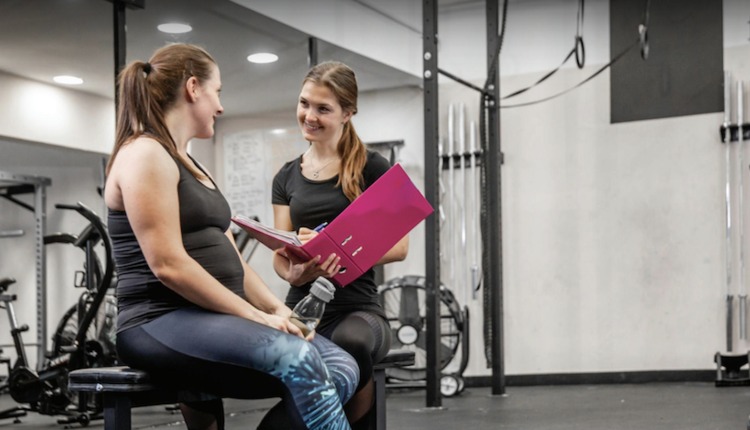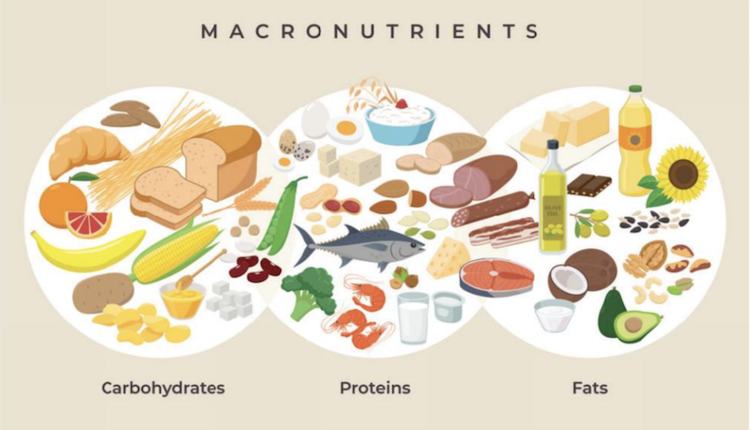
As health/fitness professionals, we’ve said it over and over again to our clients, “You can’t out-train your diet.” Then we send them on their merry ways to leave it up to their own devices to figure out what that means.


Many movement specialists or personal trainers steer clear of educating their clients on nutrition for fear that it is out of their scope of practice unless they are registered dietitians. State laws govern what one can and cannot do with clients within the realm of nutrition. However, the most educated and experienced coaches and leaders of the industry recognize that the ultimate path to obtaining optimal results is to coach a client within their context and as a whole person. This ultimate coaching technique includes movement, lifestyle, and, yes, NUTRITION.
The question is, how do we educate our clients on proper nutrition and remain relevant with the trends (meeting the current demands of the client) without compromising the scope of practice? Many personal trainers are tempted to prescribe fancy meal plans or recommend trendy diets to keep the client’s interest, which compromises the scope of practice. However, does this teach the client autonomy, and is that really what the client wants? An effective strategy to determine the most common, popular nutrition interests is to turn to Google. One may be surprised to learn that the most popular nutrition questions and searches on Google are within the scope of practice of a health/fitness professional.
Teach Energy Balance to Accomplish Goals
Out of all the billions of questions that any and all human beings can ask on Google, “How to lose weight” ranks #6. This result should scream opportunity because this inquiry is an indication that people are struggling, and the help is within the scope of practice. “How to lose weight” has a global monthly search (GMS) rate of 550,000. “How to lose weight” can be translated to educating clients on energy balance which is the ratio between calories (energy) consumed and calories (energy) expended. To lose weight, one needs to be in a calorie deficit which involves manipulating the variables of nutrition and exercise. The average client may not know this information. Therefore, health/fitness professionals can address the topic of how many calories are in certain foods and how many calories are expended performing certain exercises.
Teaching these concepts empowers the client to monitor energy balance resulting in goals achieved. Moreover, within the top 100 questions of Google searches, “how to lose belly fat” ranks #30 with GMS of 201,000, “how to gain weight” ranks #82 with GMS 135,000, and “how many calories are in a banana” ranks #100 with GMS 110,000.
Teach Portion and Serving-Size Control
Out of all the “HOW” questions and phrases posed on Google, below are the within the top 10:
#6: How to lose weight (GMS 550,000)
#7: How many ounces in a cup (GMS 450,000)
#8: How many ounces in a pound (GMS 450,000)
#9: How many ounces in a gallon (GMS 450,000)
3 Methods of Portion/Serving Size Control | ||
My Plate | Hand Portions | Percentages |
½ Plate Vegetables | Fist X2: Fruits and Vegetables | Carbohydrates: 45-65% |
¼ Plate High-Quality Protein | Size of Palm: High-Quality Protein | Protein: 10-35% |
¼ Plate Complex Carbohydrates | Modest Handful: Grains | Fat: 20-35% |
½ Tablespoon (7grams) High-Fat Foods | Size of Fingertip: Oil |
|
*MyPlate.Gov |
| *The National Academy of Sciences, Engineering, & Medicine |
These results may be an indication that people are cooking/baking at home, but more importantly, they are measuring out their ingredients or maybe even their portion/serving sizes. Portion control (shown in Figure 1) is absolutely essential to the success of a client and is a teaching moment for the client and the pro.
Teach How to Read Nutrition Facts Labels
Within the top 20 Google nutrition searches/questions, “how to read nutrition labels” ranks #11. In addition, “where are the macronutrients located on a nutrition label” ranks #15. Once again, this is encouraging because clients are looking for answers that fall within the scope of practice. The FDA first introduced the Nutrition Facts label in 1994 and updated it in 2016 (shown in Figure 2) based on the most relevant science and recent dietary recommendations.
Another positive addition is “Dual Column Labels.” Many food and drink packages contain more than one serving, but a person may consume the contents of the whole package at one time, for example a pint of ice cream or a bag of chips. Two columns provide calorie and nutrition information for one serving and for the whole package. Teaching clients how to read nutrition labels is another strategy for empowering the client to reach his/her goal.
Teach Why Proper Nutrition is Important
Continuing to focus on the top 20 Google nutrition searches/questions, “what is a balanced diet” ranks #3, “why is nutrition important” ranks #9, and “what does nutrition mean” ranks #14. While health/fitness professionals THINK that the general population is too sophisticated for foundational nutrition education, getting back-to-the-basics is what people are searching. Nutrition is a process that serves two purposes: to provide energy and to maintain body structure and function. Food is essential to providing vital nutrients for survival, functionality and health.
According to the World Health Organization, nutrition is essential for health and development starting early in life and continuing through a lifetime. Better nutrition helps to protect against noncommunicable diseases, including diabetes, heart disease, stroke, and cancer. In addition, when people have proper nutrition, they are more productive at home, at work, and in life. The Centers for Disease Control and Prevention states that healthy eating should be simple, but people continue to struggle with healthy eating.
Now that fitness professionals have validation that not all clients want customized meal plans or trendy diets, they can focus on what is important… empowering the client to take ownership of their health through proper nutrition and movement.

















